National Botanic
Gardens of Wales
Llanarthne, Carmarthenshire
|

Featured Location Guide |
The National Botanic Garden of Wales is a
centre of world significance dedicated to horticulture, conservation, science,
education, leisure and the arts. The 568-acre Garden and its centrepiece, the
Great Glasshouse, opened fully in 2000.
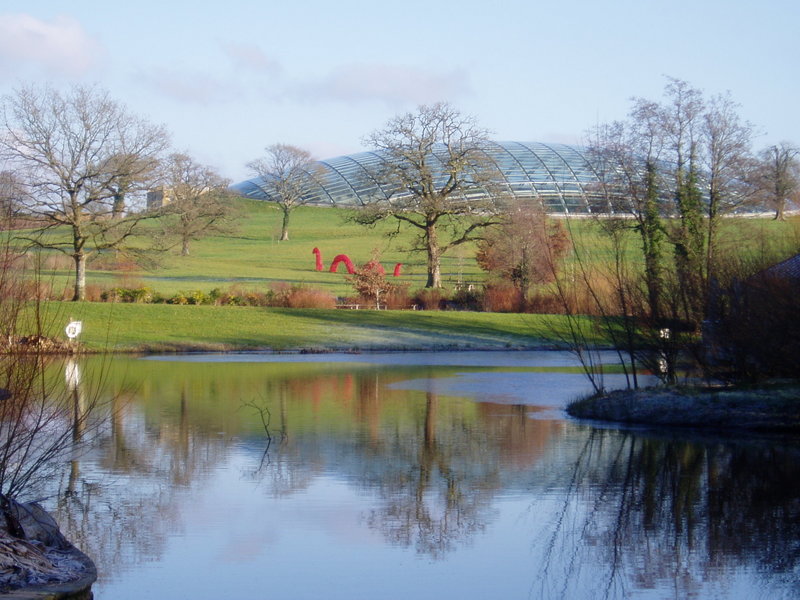
 National Botanic Garden of Wales. General view showing lakes, dragon and the
Mediterranean dome.
National Botanic Garden of Wales. General view showing lakes, dragon and the
Mediterranean dome.
The Garden of Wales is a £43.3 million project
that has attracted a £21.7 million investment from the Millennium Commission.
The Garden has a wealth of wild plant and
animal life across it's mosaic of lakes, streams, marsh, woodland, meadows and
formal gardens. Some of the wildlife that can be seen on a visit includes 100
types of butterfly and moth, 56 varieties of birds, frogs, toads and newts,
common lizards, grass snakes and slow works as well as 20 species of mammal.
Wild plant life includes 180 types of lichen, rare types of fungi and 92
varieties of moss.
On a visit some of the Garden Features you will
come across includes:
-
Gatehouse - inspired by
the Welsh roundhouses
-
The Broadwalk - a long
avenue of herbaceous borders from which a network of small paths thread.
-
Garden Lakes - a long
necklace of lakes and streams which take you from the formal to the
informal parts of the garden.
-
Dipping Ponds - used
for children to join in on special pond dipping sessions to see what tiny
life lies beneath
-
Ice House
-
Scaladaqua Tonda - a
water sculpture
-
The Circle of Decision
& The Rill - a water fountain feature
-
Rock of Ages - tells
the story of Welsh geology through the use of stones from all over Wales
-
Bluestone - this was
the stone used in the TV reconstruction to move it from the Preseli Hills
to Stonehenge.
-
Bog Garden
-
Japanese Garden
-
Bee Garden
-
Springwoods - Spring
and autumn brings the best out of this east-facing wood. In spring it is
carpeted with a sea of celandines, primroses, violets and bluebells, also
an impressive variety of snowdrops and the green flowered Derwydd
Daffodil.
-
Auricula Theatre - an
arrangement of tiered staging, like in a theatre. Varieties of Auricula,
colourful multi-headed flowers on a single stem, which flower from the
middle of March to the end of May, are on display. This structure is used
for Fuschias and Beonias during the summer months, and holly varieties
through winter and early spring.
-
Double Walled Garden
-
Tropical House
-
Mini Farm
-
Millennium Square
-
The Stable Block
-
Theatr Botanica - 360o
cinema
-
Welsh Rare Plants
-
Physicians of Myddfai
- showing the plants used to treat illnesses
-
Apothecaries' Garden -
showcasing the plants used by apothecaries in their day
-
'Ready Steady Grow'
Children's Activity Centre
-
Nursery Glasshouses
-
Living Machine - see
how the gardens recyle their own waste water.
-
Biomass Furnace - used
to heat the gardens greenhouses
-
Welsh Country Walk - a
1km walk taking in a woodland, hay meadow and country lane
-
Roots & Shoots
Adventure Zone - play area for children
-
Mirror Pool
-
Wallace Garden
-
Mediterranean Garden
-
The Great Glasshouse -
The dome is the largest single span glasshouse in the world. The plants
contained within this large glasshouse comes from six areas of the world
California, Australia, the Canary Islands, South Africa, Chile and the
Mediterranean Basin.
-
Principality House -
the only part of the large mansion house that remains today.
-
Paxton's View & Echo
Spot - a panoramic vantage point across the Tywi Valley.
-
Nelson's Tower or Paxtons Tower
 .
Built as a tribute to Lord Nelson. .
Built as a tribute to Lord Nelson.
-
Wild Garden
-
Slate Beds
-
Waun Las Fields
|
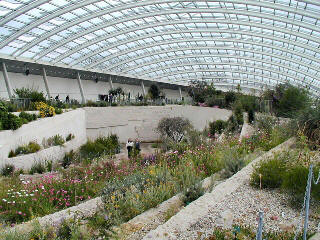 |
|
 Chris
J Dixon
Chris
J Dixon
 |
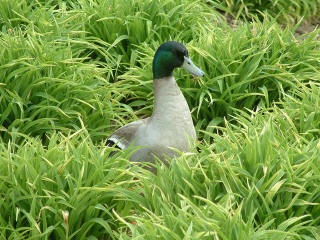 |
|
 Neil
Kennedy
Neil
Kennedy
 |
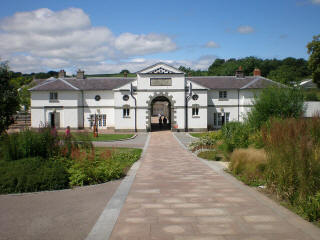 |
|
The Old Stable Block
 Hefin
Richards
Hefin
Richards
 |
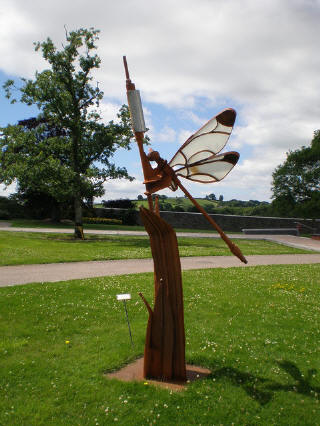 |
|
Dragon Fly Sculpture
 Hefin
Richards
Hefin
Richards
 |
Further information Grid
.
Planning Grid
|
Location: |
National
Botanic Gardens of Wales
Llanarthne,
Carmarthenshire |
|
Grid Reference: |
SN522181 |
|
Getting there: |
From M4 continue on the A48 towards
Carmarthen. After about 4 miles take B4310 to Nantgaredig. Follow the brown
leisure signs |
|
Access: |
From car park via hardcore pathways and
sometimes over country paths to get to some of the out viewpoints. |
|
Parking: |
Free parking on site. |
|
Facilities: |
Restaurant, Cafe, shop, Garden Plant Shop,
coffee shop |
|
Things To Do,
See and Photograph: |
Lots of plants, structures, views |
|
What to take: |
tripod, polarizer, macro lens, flash,
reflectors |
|
Nature highlights: |
see description above |
|
Address: |
The National Botanic Garden of Wales
Llanarthne
Carmarthenshire |
|
Postcode: |
SA32 8HG |
|
Telephone: |
01558 668768 |
|
Opening times: |
Every Day except Christmas Day.
Apr-Sept 10am to 6pm; Oct-Mar 10am to
4.30pm |
|
Charges: |
Adults £8.50; Seniors £7; Child (5-16) £4.50;
Family (2+4) £21
Children under 5 FREE |
|
Photo Restrictions: |
|
|
Other Restrictions: |
|
|
Special Needs Access: |
It is wheelchair friendly and the paths and
Great Glasshouse have been re-surfaced to improve wheelchair access. |
|
Special Needs Facilities: |
Motor and manual wheelchairs are available.
Shuttle buggy to take visitors to most parts of the garden. Disabled toilets
in the Great Glasshouse and The Stable Block area as well as the main
entrance. |
|
Children Facilities: |
Wild bunch Club, activities and fact sheets
created especially for children, activity centres and play areas |
|
Dogs Allowed: |
Only guide dogs allowed. |
|

|
Please let us know any other information that we
can add to the Further information and Planning Grids or page and any errors that you discover. Before making a long trip to any location it is always
wise to double check the current information, websites like magazines may be
correct at the time the information is written, but things change and it is of
course impossible to double check all entries on a regular basis. If you have
any good photographs that you feel would improve the illustration of this page
then please let us have copies. In referring to this page it is helpful if you
quote both the Page Ref and Topic or Section references from the Grid below. To print the
planning grid select it then right click and print the selected area.
Please submit information on locations you discover so
that this system continues to grow.
|